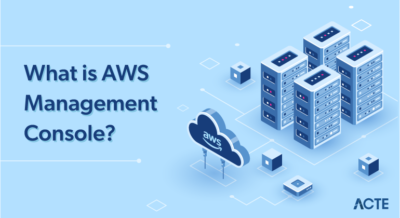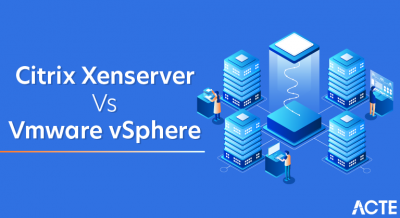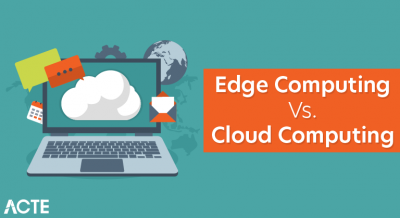
We’ve just launched our latest white paper explaining the key differences between AWS and Azure in your Hybrid Cloud! This white paper is ideal for executives and IT decision-makers seeking a primer as well as up-to-date information regarding the advantages of hybrid cloud and specific technology.
Read below for an excerpt about AWS vs Azure Key differences
Amazon Web Services (AWS) and Microsoft Azure are two of the biggest names in public cloud computing. Which one is right for you? To help you make that decision, let’s talk about what each provider brings to the public cloud table, and key differences between them.
Compute power:
- AWS: AWS EC2 users can configure their own VMs or choose pre-configured machine images, or customize MIs. Users choose size, power, memory capacity and number of VMs, and choose from different regions and availability zones with which to launch from.
- Azure: Azure users choose Virtual Hard Disk (VHD), which is equivalent to a Machine Instance, to create a VM. VHD can be pre-configured by Microsoft, the user or a third party. The user must specify the amount of cores and memory.
Storage:
- AWS: AWS has temporary storage that is allocated once an instance is started and destroyed when the instance is terminated. They also provide block storage (same as hard disks), that can be separate or attached to an instance. Object storage is offered with S3; and data archiving services with Glacier. Fully supports relational and NoSQL databases and Big Data.
- Azure: Azure offers temporary storage through D drive, block storage through Page Blobs for VMs. Block Blobs and Files also serve as object storage. Supports relational databases; NoSQL and Big Data through Azure Table and HDInsight. Azure also offers site recovery, Import Export and Azure Backup for additional archiving and recovery options.
Network:
- AWS: Amazon offers Virtual Private Cloud (VPC) so users can create isolated networks within the cloud. Within a VPC, a user can create subnets, route tables, private IP address ranges, and network gateways.
- Azure: Microsoft offers Virtual Network (VNET) that offers users ability to create isolated networks as well as subnets, route tables, private IP address ranges and network gateways. Both companies offer solutions to extend the on-premise data center into the cloud and firewall option.
Pricing Models:
- AWS: Amazon has a pay-as-you-go model, where they charge per hour. Instances are purchasable on the following models,
- On demand: Pay for what you use without upfront cost
- Reserved: Reserve an instance for 1 or 3 years with upfront cost based on use
- Spot: Customers bid for extra capacity available
- Azure: Microsoft’s pricing is also pay-as-you-go, but they charge per minute, which provides a more exact pricing model. Azure also offers short term commitments with the option between prepaid or monthly charges.
Support Plans:
- AWS: Pricing is based on a sliding scale tied to monthly usage, so your bill could potentially be quite high if you’re a heavy user.
- Azure: Users are billed a flat monthly rate.
Integrations and Open Source:
- AWS: Amazon has had a better relationship with the open source community, so there are more open source integrations available in this platform, including Jenkins and GitHub. It’s also friendlier to Linux servers.
- Azure: If you’re already using Windows development tools such as VBS, SQL database, Active Directory, Azure offers native integration for these tools. For example, use the same AD accounts you currently have to sign into Office 365 or Azure SQL instances. Azure is also good for .net developers. When it comes to open source, Microsoft hasn’t always embraced the model, but Azure is catching up–organizations now can run Red Hat Enterprise Linux and Apache Hadoop clusters in Azure.
Containers and Orchestration Support:
- AWS: Amazon continually invests in meeting demand for new services, resulting in more mature analytics offerings. (eg Hadoop support provided by AWS Elastic Map Reduce). They’ve added machine learning tools and features targeted at IoT, and allow customers to build mobile apps or create high performance computing environments depending on needs. They also offer support for Docker.
- Azure: Microsoft also has a strong track record for meeting new demand, and offers Hadoop support with Azure HDInsight. Windows Server 2016 provides integration with Docker for both Windows containers and Hyper-V containers. The platform can run Windows or Linux containers, making it a formidable competitor with Amazon.
Compliance:
- AWS: Amazon has had a long relationship with government agencies, and their compliance offerings include certifications in ITAR, DISA, HIPAA, CJIS, FIPS, and more. They also provide security so that only screened persons can access the cloud, a must for agencies handling sensitive information.
- Azure: Microsoft claims to have more than 50 compliant offerings, including ITAR, DISA, HIPAA, CJIS, FIPS. Microsoft provides the same level of security as Amazon, setting up permissions so that only screened persons can access a government-level cloud.
User-friendliness:
- AWS: Amazon offers more features and configurations– if you’re willing to learn the system. IT pros agree that AWS offers a lot of power, flexibility, customization room with support for many third-party integrations. But there is a learning curve with AWS.
- Azure: If you’re a Windows admin, Azure will be easier to use out of the box because it is a Windows platform and doesn’t require learning something new. It’s simple to integrate on-premises Windows servers with cloud instances to create a hybrid environment. Tools such as SQL database and Active Directory work well with Azure.
Licensing:
- AWS: Amazon offers a few different options for licensing in the cloud: Customers can purchase new licenses (bundled with EC2 or Relational Database Services instances), or bring their previously purchased licenses (BYOL), as part of their partnership with Microsoft. In this case, users can use Dedicated Hosts or Software Assurance to move their licenses to the cloud. Before licenses can be migrated, users must make sure that all Microsoft Server application products migrated to cloud Service providers via the License Mobility through Software Assurance program must be covered with active Software Assurance (SA). The server applications must also be on the list of eligible products, which includes Exchange Server, SQL Server Enterprise Edition, and Sharepoint Server.
- Azure: Microsoft offers license mobility for qualifying application servers, but users must determine if their servers fit the requirements for mobility to avoid paying for extra licensing. Windows Server itself is NOT eligible (eg, running on-premises Windows Server with SQL server). If you spin up a VM in the cloud running the same stack, you will pay for two Windows server licenses since that license is charged per usage and not eligible for mobility. However, a SQL license is eligible, so you can use that to run SQL server in the cloud.
Hybrid Cloud Capabilities:
- AWS: AWS unveiled Snowball Edge in November, a 100TB hard drive for moving workloads between its cloud and clients’ data centers. It also added a much needed hybrid element to its portfolio when it partnered with VMware in October to allow their customers to burst into its cloud environments. However, Amazon has only recently taken up the hybrid cloud banner, and with its past public stances of “pure public cloud or nothing” it is still developing its hybrid story.
- Azure: As a longtime legacy IT provider, Microsoft has strong support for hybrid cloud services, with platforms like Azure StorSimple, Hybrid SQL Server, and Azure Stack, a new hybrid cloud platform product that allows you to bring nearly full public Azure functionality to your own on-premises data centers using the same pay-as-you-go pricing model it offers for its public cloud.
Conclusion
AWS and Azure offer many similar capabilities, so it’s not necessarily a matter of one provider being “better” or “worse” than the other. It all depends on what your business needs. No matter which provider you ultimately decide to go with (or even choose a different provider than AWS or Azure), you’ll be reaping the benefits of a hyper scalable cloud solution that can meet your growing business needs.





